Generation X
Generation X (or Gen X for short) is the demographic cohort following the baby boomers and preceding the millennials. Researchers and popular media typically use birth years around 1965 to 1980 to define Generation Xers, although some sources use birth years beginning as early as 1960 and ending somewhere from 1977 to 1985. By this definition and U.S. Census data, there are 65.2 million Gen Xers[1] in the United States as of 2019.[2] Most members of Generation X are the children of the Silent Generation and early boomers;[3][4] Xers are also often the parents of millennials[3] and Generation Z.[5]
As children in the 1970s and 1980s, a time of shifting societal values, Gen Xers were sometimes called the "latchkey generation", due to reduced adult supervision compared to previous generations. This was a result of increasing divorce rates and increased maternal participation in the workforce, prior to widespread availability of childcare options outside the home. As adolescents and young adults in the 1980s and 1990s, Xers were dubbed the "MTV Generation" (a reference to the music video channel), sometimes being characterized as slackers, cynical, and disaffected. Some of the cultural influences on Gen X youth were the musical genres of grunge and hip hop music, and independent films. In midlife, research describes them as active, happy, and achieving a work–life balance. The cohort has been credited with entrepreneurial tendencies, and was the last generation in the United States for whom post-secondary education was broadly financially remunerative.
| Part of a series on |
| Major generations of the Western world |
|---|
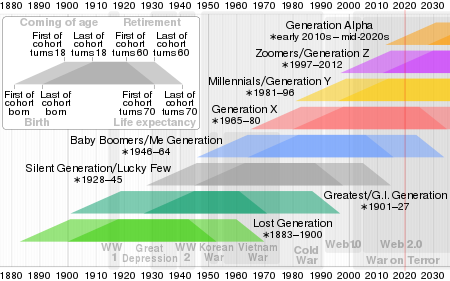 Timeline of major demographic cohorts since the late-nineteenth century with approximate dates and ages |
Terminology and etymology

The term Generation X has been used at various times to describe alienated youth. In the early 1950s, Hungarian photographer Robert Capa first used Generation X as the title for a photo-essay about young men and women growing up immediately following World War II. The term first appeared in print in a December 1952 issue of Holiday magazine announcing their upcoming publication of Capa's photo-essay.[6] From 1976 to 1981, English musician Billy Idol used the moniker as the name for his punk rock band.[7] Idol had attributed the name of his band to the book Generation X, a 1965 book on British popular youth culture written by journalists Jane Deverson and Charles Hamblett[8][9] — a copy of which had been owned by Idol's mother.[10] These uses of the term appear to have no connection to Robert Capa's photo-essay.[6]
The term acquired its contemporary application after the release of Generation X: Tales for an Accelerated Culture, a 1991 novel written by Canadian author Douglas Coupland.[8][11] In 1987, Coupland had written a piece in Vancouver Magazine titled "Generation X" which was "the seed of what went on to become the book".[12][13] Coupland referenced Billy Idol's band Generation X in the 1987 article and again in 1989 in Vista magazine.[14] In the book proposal for his novel, Coupland writes that Generation X is "taken from the name of Billy Idol’s long-defunct punk band of the late 1970s".[15] However, in 1995 Coupland denied the term's connection to the band, stating that:
"The book's title came not from Billy Idol's band, as many supposed, but from the final chapter of a funny sociological book on American class structure titled Class, by Paul Fussell. In his final chapter, Fussell named an 'X' category of people who wanted to hop off the merry-go-round of status, money, and social climbing that so often frames modern existence."[16][12]
Author William Strauss noted that around the time Coupland's 1991 novel was published the symbol "X" was prominent in popular culture, as the film Malcolm X was released in 1992, and that the name "Generation X" ended up sticking. The "X" refers to an unknown variable or to a desire not to be defined.[17][18][11] Strauss's coauthor Neil Howe noted the delay in naming this demographic cohort saying, "Over 30 years after their birthday, they didn't have a name. I think that's germane." Previously, the cohort had been referred to as Post-Boomers, Baby Busters (referencing the drop in the birth rates following the baby boom),[19] New Lost Generation, latchkey kids, MTV Generation, and the 13th Generation (the 13th generation since American independence).[7][17][14][20][21]
Date and age range definitions
Declining Western fertility rates
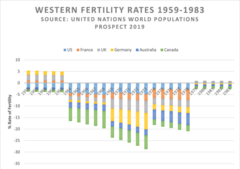
Generation X is the demographic cohort following the post–World War II baby-boom, representing a generational change from the baby boomers. Many researchers and demographers use dates which correspond to the fertility-patterns in the population. For Generation X, in the U.S. (and broadly, in the Western world), the period begins at a time when fertility rates started to significantly decrease, following the baby boom peak of the late 1950s, until an upswing in the late 1970s and eventual recovery at the start of the 1980s.
In the U.S., the Pew Research Center, a non-partisan think-tank, delineates a Generation X period of 1965–1980 which has, albeit gradually, come to gain acceptance in academic circles.[22] Moreover, although fertility rates are preponderant in the definition of start and end dates, the center remarks: "Generations are analytical constructs, it takes time for popular and expert consensus to develop as to the precise boundaries that demarcate one generation from another."[23] Pew takes into account other factors, notably the labor market as well as attitudinal and behavioral trends of a group. Writing for Pew's Trend magazine in 2018, psychologist Jean Twenge observed that the "birth year boundaries of Gen X are debated but settle somewhere around 1965–1980".[24] According to this definition, the oldest Gen Xer is 55 years old and the youngest is, or is turning, 40 years old in 2020.
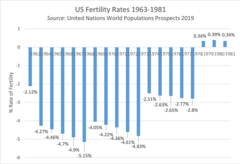
The Brookings Institution, another U.S. think-tank, sets the Gen X period as between 1965 and 1981.[25] With regard to federal agencies, the U.S. Federal Reserve Board use 1965–1980 to define Gen X.[26] The U.S. Social Security Administration (SSA) defines the years for Gen X as between 1964 and 1979. The US Department of Defense (DoD), conversely, use dates 1965 to 1977.[27] In their 2002 book When Generations Collide, Lynne Lancaster and David Stillman use 1965 to 1980, while in 2012 authors Jain and Pant also used parameters of 1965 to 1980.[28] U.S. news outlets such as The New York Times[29][30] and The Washington Post[31] describe Generation X as people born between 1965 and 1980. Bloomberg,[32] Business Insider,[33] and Forbes[34][35] use 1965–1980. Time magazine states that Generation X is "roughly defined as anyone born between 1965 and 1980".[36]
U.S. polling firm Gallup uses 1965–1979 to define Generation X.[37] In Australia, the McCrindle Research Center uses parameters 1965–1979.[38] In France, Dejoux, a researcher from the Conservatoire National des Arts et Métiers (CNAM), delimits dates of 1965 to 1980.[39] In the UK, the Resolution Foundation think-tank defines Gen X as those born between 1966 and 1980.[40] PricewaterhouseCoopers, a multinational professional services network headquartered in London, describes Generation X employees as those born from 1965 to 1980.[41]
Other age range markers
Generational span
On the basis of the time it takes for a generation to mature, U.S. authors William Strauss and Neil Howe define Generation X as those born between 1961 and 1981 in their 1991 book titled Generations.[42] Jeff Gordinier, in his 2008 book X Saves the World, also has a wider definition to include those born between 1961 and 1977 but possibly as late as 1980.[4] George Masnick of the Harvard Joint Center for Housing Studies puts this generation in the time-frame of 1965 to 1984, in order to satisfy the premise that boomers, Xers, and millennials "cover equal 20-year age spans".[43] In 2004, journalist J. Markert also acknowledged the 20-year increments but goes one step further and subdivides the generation into two 10-year cohorts with early and later members of the generation. The first begins in 1966 and ends in 1975 and the second begins in 1976 and ends in 1985; this thinking is applied to each generation (Silent, boomers, Gen X, millennials, etc.).[44]
External historical events
Based on external events of historical importance, Schewe and Noble in 2002 argue that a cohort is formed against significant milestones and can be any length of time. Against this logic, Generation X begins in 1966 and ends in 1976, with those born between 1955 and 1965 being labelled as "trailing-edge boomers".[45]
Generation X as late boomers
In Canada, professor David Foot describes Generation X as late boomers and includes those born between 1960 and 1966, whilst the "Bust Generation", those born between 1967 and 1979, is considered altogether a separate generation, in his 1996 book Boom Bust & Echo: How to Profit from the Coming Demographic Shift.[46][47]
Generational cuspers
Individuals born in the Generation X and millennial cusp years of the late 1970s and early to mid-1980s have been identified by the media as a "microgeneration" with characteristics of both generations.[48] Names given to these "cuspers" include Xennials,[49] Generation Catalano,[50] and the Oregon Trail Generation.[51]
Demographics
United States
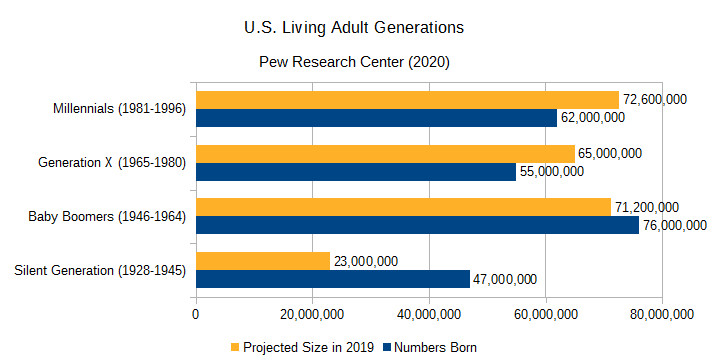
There are differences in Gen X population numbers depending on the date-range selected. In the U.S., using Census population projections, the Pew Research Center found that the Gen X population born from 1965 to 1980 numbered 65.2 million in 2019. The cohort is likely to overtake boomers in 2028.[2] A 2010 Census report counted approximately 84 million people living in the US who are defined by birth years ranging from the early 1960s to the early 1980s.[52] In a 2012 article for the Joint Center for Housing Studies of Harvard University, George Masnick wrote that the "Census counted 82.1 million" Gen Xers in the U.S. Masnick concluded that immigration filled in any birth year deficits during low fertility years of the late 1960s and early 1970s.[43] Jon Miller at the Longitudinal Study of American Youth at the University of Michigan wrote that "Generation X refers to adults born between 1961 and 1981" and it "includes 84 million people".[53] In their 1991 book Generations, authors Howe and Strauss indicated that the total number of Gen X individuals in the U.S. was 88.5 million.[54]
Impact of family planning programs
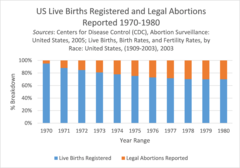
The birth control pill, introduced in 1960 by the U.S. Food and Drug Administration, was one contributing factor of declining birth rates. Initially, the pill spread rapidly amongst married women as an approved treatment for menstrual disturbance. However, it was also found to prevent pregnancy and was prescribed as a contraceptive in 1964. The pill, as it became commonly known, reached younger, unmarried college women in the late 1960s when state laws were amended and reduced the age of majority from 21 to ages 18–20.[55] These policies are commonly referred to as the Early Legal Access (ELA) laws.
Another major factor was abortion, only available in a few states until its legalization in a 1973 US Supreme Court decision in Roe v. Wade. This was replicated elsewhere, with reproductive rights legislation passed, notably in the UK (1967), France (1975), West Germany (1976), New Zealand (1977), Italy (1978), and the Netherlands (1980). From 1973 to 1980, the abortion rate per 1,000 US women aged 15–44 increased exponentially from 16% to 29% with more than 9.6 million terminations of pregnancy practiced. Between 1970 and 1980, on average, for every 10 American citizens born, 3 were aborted.[56] However, increased immigration during the same period of time helped to partially offset declining birth-rates and contributed to making Generation X an ethnically and culturally diverse demographic cohort.[7][28]
Parental lineage
Generally, Gen Xers are the children of the Silent Generation and older baby boomers.[4]
Characteristics
As children and adolescents
Rising divorce rates and women workforce participation
Strauss and Howe, who wrote several books on generations, including one specifically on Generation X titled 13th Gen: Abort, Retry, Ignore, Fail? (1993), reported that Gen Xers were children at a time when society was less focused on children and more focused on adults.[57] Xers were children during a time of increasing divorce rates, with divorce rates doubling in the mid-1960s, before peaking in 1980.[7][58][59] Strauss and Howe described a cultural shift where the long-held societal value of staying together for the sake of the children was replaced with a societal value of parental and individual self-actualization. Strauss wrote that society "moved from what Leslie Fiedler called a 1950s-era 'cult of the child' to what Landon Jones called a 1970s-era 'cult of the adult'".[57][60] The Generation Map, a report from Australia's McCrindle Research Center writes of Gen X children: "their Boomer parents were the most divorced generation in Australian history".[61] According to Christine Henseler in the 2012 book Generation X Goes Global: Mapping a Youth Culture in Motion, "We watched the decay and demise (of the family), and grew callous to the loss."[62]
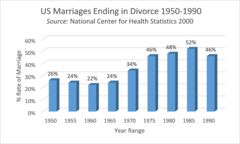
The Gen X childhood coincided with the sexual revolution of the 1960s to 1980s, which Susan Gregory Thomas described in her book In Spite of Everything as confusing and frightening for children in cases where a parent would bring new sexual partners into their home.[63] Thomas also discussed how divorce was different during the Gen X childhood, with the child having a limited or severed relationship with one parent following divorce, often the father, due to differing societal and legal expectations. In the 1970s, only nine U.S. states allowed for joint custody of children, which has since been adopted by all 50 states following a push for joint custody during the mid-1980s.[64] Kramer vs. Kramer, a 1979 American legal drama based on Avery Corman's best-selling novel, came to epitomize the struggle for child custody and the demise of the traditional nuclear family.[65]
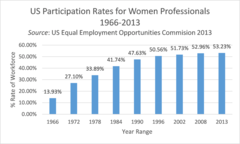
The rapid influx of boomer women into the labor force that began in the 1970s was marked by the confidence of many in their ability to successfully pursue a career while meeting the needs of their children. This resulted in an increase in latchkey children, leading to the terminology of the "latchkey generation" for Generation X.[66][67][68] These children lacked adult supervision in the hours between the end of the school day and when a parent returned home from work in the evening, and for longer periods of time during the summer. Latchkey children became common among all socioeconomic demographics, but this was particularly so among middle- and upper-class children.[67] The higher the educational attainment of the parents, the higher the odds the children of this time would be latchkey children, due to increased maternal participation in the workforce at a time before childcare options outside the home were widely available.[69][70][71][72] McCrindle Research Centre described the cohort as "the first to grow up without a large adult presence, with both parents working", stating this led to Gen Xers being more peer-oriented than previous generations.[61][73]
Conservative and neoliberal turn
Some older Gen Xers started high school in the waning years of the Carter presidency, but much of the cohort became socially and politically conscious during the Reagan Era. President Ronald Reagan, voted in office principally by the boomer generation,[74] embraced laissez-faire economics with vigor with cuts in the growth of government spending, reduction in taxes for the higher echelon of society, legalization of stock buybacks, and deregulation of key industries.[75] Measures had drastic consequences on the social fabric of the country even if, gradually, reforms gained acceptability and exported overseas to willing participants. The early 1980s recession saw unemployment rise to 10.8% in 1982 requiring, more often than not, dual parental incomes.[76] One-in-five American children grew up in poverty during this time. The federal debt almost tripled during Reagan's time in office, from $998 billion in 1981 to $2.857 trillion in 1989 placing greater burden on repayment on the incoming generation.[77]
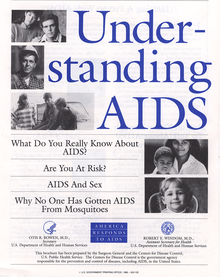
Government expenditure shifted from domestic programs to defense. Remaining funding initiatives, moreover, tended to be diverted away from programs for children and often directed toward the elderly population, with cuts to Medicaid and programs for children and young families, and protection and expansion of Medicare and Social Security for the elderly population. These programs for the elderly were not tied to economic need. Congressman David Durenberger criticized this political situation, stating that while programs for poor children and for young families were cut, the government provided "free health care to elderly millionaires".[60][78]
The crack epidemic and AIDS
Gen Xers came of age or were children during the 1980s crack epidemic, which disproportionately impacted urban areas as well as the African-American community in the U.S. Drug turf battles increased violent crime, and crack addiction impacted communities and families. Between 1984 and 1989, the homicide rate for black males aged 14 to 17 doubled in the U.S., and the homicide rate for black males aged 18 to 24 increased almost as much. The crack epidemic had a destabilizing impact on families with an increase in the number of children in foster care. In 1986, President Reagan signed the Anti-Drug Abuse Act to enforce strict mandatory minimum sentencing for drug users and increased the federal budget for supply-reduction efforts.[79][80]
Fear of the impending AIDS epidemic of the 1980s and 1990s loomed over the formative years of Generation X. The emergence of AIDS coincided with Gen X's adolescence, with the disease first clinically observed in the U.S. in 1981. By 1985, an estimated one-to-two million Americans were HIV-positive. This particularly hit the LGBT community.[81] As the virus spread, at a time before effective treatments were available, a public panic ensued. Sex education programs in schools were adapted to address the AIDS epidemic, which taught Gen X students that sex could kill you.[82][83]
The rise of home computing

Gen Xers were the first children to have access to personal computers in their homes and at schools.[61] Those born in the early cohort will have experienced the first analog machines whilst, at the late-end, will have been pioneers, at the forefront of the Internet revolution. In the early 1980s, the growth in the use of personal computers exploded with manufacturers such as Commodore, Atari, and Apple responding to the demand via 8- and 16-bit machines. This in turn stimulated the software industries with corresponding developments for backup storage, use of the floppy disk, zip drive, and CD-ROM.[84] At school, several computer projects were supported by the Department of Education under U.S. Secretary Bell's "Technology Initiative".[85] This was later mirrored in the UK's 1982 Computers for Schools programme[86] and, in France, under the 1985 scheme plan informatique pour tous (IPT).[87] During the mid-1990s, AOL dial-up modems in the U.S. enabled millions of late Xer teens to log online, paving the way for "digital native" millennials.
The post-civil rights generation
In the U.S., Generation X was the first cohort to grow up post-integration after the racist Jim Crow laws. They were described in a marketing report by Specialty Retail as the kids who "lived the civil rights movement". They were among the first children to be bused to attain integration in the public school system. In the 1990s, Strauss reported Gen Xers were "by any measure the least racist of today's generations".[60][88] In the U.S., Title IX, which passed in 1972, provided increased athletic opportunities to Gen X girls in the public school setting.[89] Roots, based on the novel by Alex Haley and broadcast as a 12-hour series, was viewed as a turning point in the country's ability to relate to the afro-American history.[90]
Generation X internationally
Although, globally, children and adolescents of Generation X will have been heavily influenced by U.S. cultural industries with shared global currents (e.g. rising divorce rates, the AIDS epidemic, advancements in ICT), there is not one U.S.-born raised concept but multiple perspectives and geographical outgrowths. Even within the period of analysis, inside national communities, commonalities will have differed on the basis of one's birth date. The generation, Christine Henseler also remarks, was shaped as much by real-world events, within national borders, determined by specific political, cultural, and historical incidents. She adds "In other words, it is in between both real, clearly bordered spaces and more fluid global currents that we can spot the spirit of Generation X."[91]

In Russia, for example, Generation Xers are referred to as "the last Soviet children", as the last children to come of age prior to the downfall of communism in their nation and prior to the fall of the Soviet Union.[38] Those that reached adulthood in the 1980s and grew up educated in the doctrines of Marxism and Leninism found themselves against a background of economic and social change with the advent of Mikhail Gorbatchev to power and Perestroika. However, even before the collapse of the Soviet Union and the disbanding of the Communist Party, surveys demonstrated that Russian young people repudiated the key features of the Communist worldview that their party leaders, schoolteachers, and even parents had tried to instill in them.[92] This generation, caught in the transition between Marxism–Leninism and an unknown future, and wooed by the new domestic political classes, remained largely apathetic.[93]
In France, "Generation X" is not as widely known or used to define its members. Demographically, those born early during that period were sometimes referred to as 'Génération Bof' because of their tendency to use the word 'bof', which, translated into English, means 'whatever".[38] More closely associated is "Génération Mitterrand", pertaining to socialist François Mitterrand who served as President of France during two consecutive terms between 1981 and 1995. There is general agreement that, domestically, the event that is accepted in France as the separating point between baby boomer generation and Generation X are the French strikes and violent riots of May 1968. For those at the tail-end of the generation, educational and defense reforms, a new style baccalauréat général with three distinct streams in 1995 (the preceding programme, introduced in 1968) and the cessation of military conscription in 1997 (for those born after December 1978) are considered as new transition points to the next.[94]
The United Kingdom's Economic and Social Research Council described Generation X as "Thatcher's children" because the cohort grew up while Margaret Thatcher was Prime Minister from 1979 to 1990, "a time of social flux and transformation". Those born in the late 1960s and early 1970s grew up in a period of social unrest. While unemployment was low in the early 1970s, industrial and social unrest escalated. Strike action culminated in the 'winter of discontent' in 1978–79, and the Troubles began to unfold in Northern Ireland. The turn to neoliberal policies introduced and maintained by consecutive conservative governments from 1979 to 1997 marked the end of the post-war consensus. Educationally, the vast majority of the cohort attended secondary modern schools, relabelled comprehensive schools with compulsory education ending at the age of 16. The Further and Higher Education Act 1992 and the liberalisation of higher education in the UK saw greater numbers gaining places, especially those born at the tail-end of the generation.[95]
In Germany, "Generation X" is not widely used or applied. Instead, reference is made to "Generation Golf" in the previous West German republic, based on a novel by Florian Illies whilst, in the east, children of the "Mauerfall" or coming down of the wall. For former east Germans, there was adaptation but also a sense of loss of accustomed values and structures, sometimes turning into romantic narratives of their childhood. For those in the West, a period of discovery and exploration of what had been a forbidden land.[96]
In South Africa, Gen Xers spent their formative years of the 1980s during the "hyper-politicized environment of the final years of apartheid".[97]
As young adults
Continued growth in college enrollments
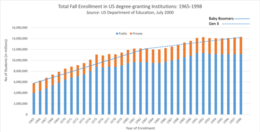
In the U.S., compared to the boomer generation, Generation X was more educated than their parents with the share of young adults enrolling in college steadily increasing from 1983 before peaking in 1998. In 1965, as early boomers entered college, total enrollment of new undergraduates was just over 5.7 million individuals across the public and private sectors. By 1983, the first year of Gen X college enrollments (as per Pew Research's definition), this figure had reached 12.2 million, an increase of 53%, effectively a doubling in student intake. As the 1990s progressed, Gen X college enrollments continued to climb with increased loan borrowing as the cost of an education became substantially more expensive compared to their peers in the mid-1980s.[98] By 1998, the generation's last year of college enrollment, those entering the higher education sector totaled 14.3 million.[99] In addition, unlike Boomers and previous generations, women outpaced men in college completion rates.[100]
Adjusting to a new societal environment
For early Gen Xer graduates entering the job market at the end of the 1980s, economic conditions were challenging and did not show signs of major improvements until the mid-1990s.[101] In the U.S., restrictive monetary policy to curb rising inflation and the collapse of a large number of savings and loan associations (private banks that specialized in home mortgages) impacted the welfare of many American households and precipitated a large government bailout that placed further strain on the budget.[102] Furthermore, three decades of growth came to an end and the unwritten social contract between employers and employees, which had endured during the 1960s and 1970s and scheduled to last until retirement was no longer applicable with, by the late 1980s, large-scale layoffs of boomers, corporate downsizing, and accelerated offshoring of production.[103]
On the political front, in the U.S. the generation became ambivalent if not outright disaffected with politics; they had been reared in the shadow of the Vietnam War and Watergate scandal, and came to maturity under the Reagan and Bush presidencies, with first-hand experience of the impact of neoliberal policies. Few had experienced a Democratic administration and even then, only, at an atmospheric level. For those on the left of the political spectrum, the disappointments with the previous boomer student mobilizations of the 1960s and the collapse of those movements towards a consumerist "greed is good" and "yuppie" culture during the 1980s felt, to a greater extent, hypocrisy if not outright betrayal. The end of communism and the socialist utopia with the fall of the Berlin Wall, moreover, added to the disillusionment that any alternative to the capitalist model was possible.[104]
Birth of the slacker
In 1990, Time magazine published an article titled "Living: Proceeding with Caution", which described those then in their 20s as aimless and unfocused. Media pundits and advertisers further struggled to define the cohort, typically portraying them as "unfocused twentysomethings". A MetLife report noted: "media would portray them as the Friends generation: rather self-involved and perhaps aimless...but fun".[105][106] Gen Xers were often portrayed as apathetic or as "slackers", lacking bearings, a stereotype which was initially tied to Richard Linklater's comedic and essentially plotless 1991 film Slacker. After the film was released, "journalists and critics thought they put a finger on what was different about these young adults in that 'they were reluctant to grow up' and 'disdainful of earnest action'".[106][107] Ben Stiller's 1994 film Reality Bites also sought to capture the zeitgeist of the generation with a portrayal of the attitudes and lifestyle choices of the time.[108]
Negative stereotypes of Gen X young adults continued, including that they were "bleak, cynical, and disaffected". In 1998, such stereotypes prompted sociological research at Stanford University to study the accuracy of the characterization of Gen X young adults as cynical and disaffected. Using the national General Social Survey, the researchers compared answers to identical survey questions asked of 18–29-year-olds in three different time periods. Additionally, they compared how older adults answered the same survey questions over time. The surveys showed 18–29-year-old Gen Xers did exhibit higher levels of cynicism and disaffection than previous cohorts of 18–29-year-olds surveyed. However, they also found that cynicism and disaffection had increased among all age groups surveyed over time, not just young adults, making this a period effect, not a cohort effect. In other words, adults of all ages were more cynical and disaffected in the 1990s, not just Generation X.[109][110]
Rise of the Internet and the dot-com bubble
By the mid-late 1990s, under Bill Clinton's presidency, economic optimism had returned to the U.S.,[111] with unemployment reduced from 7.5% in 1992 to 4% in 2000.[112] Younger members of Gen X, straddling across administrations, politically experienced a "liberal renewal". In 1997, Time magazine published an article titled "Generation X Reconsidered", which retracted the previously-reported negative stereotypes and reported positive accomplishments, citing Gen Xers' tendency to found technology start-ups and small businesses as well as their ambition, which research showed was higher among Gen X young adults than older generations.[106] Yet, the slacker moniker stuck.[113][114] As the decade progressed, Gen X gained a reputation for entrepreneurship. In 1999, The New York Times dubbed them "Generation 1099", describing them as the "once pitied but now envied group of self-employed workers whose income is reported to the Internal Revenue Service not on a W-2 form, but on Form 1099".[115]
.jpg)
The development of the internet witnessed a frenzy of IT initiatives. Newly-created companies, launched on stock exchanges globally, were formed with dubitable revenue generation or cash flow.[116] When the dot-com bubble eventually burst in 2000, early Gen Xers who had embarked as entrepreneurs in the IT industry riding the Internet wave, as well as newly-qualified programmers at the tail-end of the generation (who had grown up with AOL and the first Web browsers), were both caught in the crash.[117] This had major repercussions, with cross-generational consequences; five years after the bubble burst, new matriculation of IT millennial undergraduates fell by 40% and by as much as 70% in some information systems programs.[118]
However, following the crisis, sociologist Mike Males reported continued confidence and optimism among the cohort saying "surveys consistently find 80% to 90% of Gen Xers self-confident and optimistic".[119] Males wrote "these young Americans should finally get the recognition they deserve", praising the cohort and stating that "the permissively raised, universally deplored Generation X is the true 'great generation', for it has braved a hostile social climate to reverse abysmal trends", describing them as the hardest-working group since the World War II generation. He reported Gen Xers' entrepreneurial tendencies helped create the high-tech industry that fueled the 1990s economic recovery.[119][120] In 2002, Time magazine published an article titled Gen Xers Aren't Slackers After All, reporting four out of five new businesses were the work of Gen Xers.[88][121]
Response to 9/11
In the U.S., Gen Xers were described as the major heroes of the September 11 terrorist attacks by author William Strauss. The firefighters and police responding to the attacks were predominantly from Generation X. Additionally, the leaders of the passenger revolt on United Airlines Flight 93 were also, by majority, Gen Xers.[113][122][123] Author Neil Howe reported survey data showing Gen Xers were cohabiting and getting married in increasing numbers following the terrorist attacks, with Gen X survey respondents reporting they no longer wanted to live alone.[124] In October 2001, the Seattle Post-Intelligencer wrote of Gen Xers: "Now they could be facing the most formative events of their lives and their generation."[125] The Greensboro News & Record reported members of the cohort "felt a surge of patriotism since terrorists struck" by giving blood, working for charities, donating to charities, and by joining the military to fight the War on Terror.[126] The Jury Expert, a publication of The American Society of Trial Consultants, reported: "Gen X members responded to the terrorist attacks with bursts of patriotism and national fervor that surprised even themselves."[113]
In midlife
Achieving a work-life balance
In 2011, survey analysis from the Longitudinal Study of American Youth found Gen Xers (defined as those who were then between the ages of 30 and 50) to be "balanced, active, and happy" in midlife and as achieving a work-life balance. The Longitudinal Study of Youth is an NIH-NIA funded study by the University of Michigan which has been studying Generation X since 1987. The study asked questions such as "Thinking about all aspects of your life, how happy are you? If zero means that you are very unhappy and 10 means that you are very happy, please rate your happiness." LSA reported that "mean level of happiness was 7.5 and the median (middle score) was 8. Only four percent of Generation X adults indicated a great deal of unhappiness (a score of three or lower). Twenty-nine percent of Generation X adults were very happy with a score of 9 or 10 on the scale."[127][128][129][130]
In 2016, a global consumer insights project from Viacom International Media Networks and Viacom, based on over 12,000 respondents across 21 countries,[131] reported on Gen X's unconventional approach to sex, friendship, and family,[132] their desire for flexibility and fulfillment at work[133] and the absence of midlife crisis for Gen Xers.[134] The project also included a 20 min documentary titled Gen X Today.[135] In 2014, Pew Research provided further insight, adding that the cohort was "savvy, skeptical and self-reliant; they're not into preening or pampering, and they just might not give much of a hoot what others think of them. Or whether others think of them at all."[136] Furthermore, guides regarding managing multiple generations in the workforce describes Gen Xers as: independent, resilient, resourceful, self-managing, adaptable, cynical, pragmatic, skeptical of authority, and as seeking a work-life balance.[105][137][138][139]
Entrepreneurship as an individual trait

Individualism is one of the defining traits of Generation X, and reflected in their entrepreneurial spirit.[140] In the 2008 book X Saves the World: How Generation X Got the Shaft but Can Still Keep Everything from Sucking, author Jeff Gordinier describes Generation X as a "dark horse demographic" which "doesn't seek the limelight". Gordiner cites examples of Gen Xers' contributions to society such as: Google, Wikipedia, Amazon.com, and YouTube, arguing that if boomers had created them, "we'd never hear the end of it". In the book, Gordinier contrasts Gen Xers to baby boomers, saying boomers tend to trumpet their accomplishments more than Gen Xers do, creating what he describes as "elaborate mythologies" around their achievements. Gordiner cites Steve Jobs as an example, while Gen Xers, he argues, are more likely to "just quietly do their thing".[4][141]
In a 2007 article published in the Harvard Business Review, authors Strauss and Howe wrote of Generation X: "They are already the greatest entrepreneurial generation in U.S. history; their high-tech savvy and marketplace resilience have helped America prosper in the era of globalization."[142] According to authors Michael Hais and Morley Winograd:
Small businesses and the entrepreneurial spirit that Gen Xers embody have become one of the most popular institutions in America. There's been a recent shift in consumer behavior and Gen Xers will join the "idealist generation" in encouraging the celebration of individual effort and business risk-taking. As a result, Xers will spark a renaissance of entrepreneurship in economic life, even as overall confidence in economic institutions declines. Customers, and their needs and wants (including Millennials) will become the North Star for an entire new generation of entrepreneurs.[143]
A 2015 study by Sage Group reports Gen Xers "dominate the playing field" with respect to founding startups in the United States and Canada, with Xers launching the majority (55%) of all new businesses in 2015.[144][145] In addition, in the UK, a 2016 study of over 2,500 office workers conducted by Workfront found that survey respondents of all ages selected those from Generation X as the hardest-working employees in today's workforce (chosen by 60%).[146] Gen X was also ranked highest among fellow workers for having the strongest work ethic (chosen by 59.5%), being the most helpful (55.4%), the most skilled (54.5%), and the best troubleshooters/problem-solvers (41.6%).[147][148]
Benefits of a college education
Unlike millennials, Generation X was the last generation in the U.S. for whom higher education was broadly financially remunerative. In 2019, the Federal Reserve Bank of St. Louis published research (using data from the 2016 Survey of Consumer Finances) demonstrating that after controlling for race and age, cohort families with heads of household with post-secondary education and born before 1980 have seen wealth and income premiums, while, for those after 1980, the wealth premium has weakened to a point of statistical insignificance (in part because of the rising cost of college). The income premium, while remaining positive, has declined to historic lows, with more pronounced downward trajectories among heads of household with postgraduate degrees.[149]
Parenting and volunteering
In terms of advocating for their children in the educational setting, author Neil Howe describes Gen X parents as distinct from baby boomer parents. Howe argues that Gen Xers are not helicopter parents, which Howe describes as a parenting style of boomer parents of millennials. Howe described Gen Xers instead as "stealth fighter parents", due to the tendency of Gen X parents to let minor issues go and to not hover over their children in the educational setting, but to intervene forcefully and swiftly in the event of more serious issues.[150] In 2012, the Corporation for National and Community Service ranked Gen X volunteer rates in the U.S. at "29.4% per year", the highest compared with other generations. The rankings were based on a three-year moving average between 2009 and 2011.[151][152]
Income differential with previous generations
A report titled Economic Mobility: Is the American Dream Alive and Well? focused on the income of males 30–39 in 2004 (those born April 1964 – March 1974). The study was released on 25 May 2007 and emphasized that this generation's men made less (by 12%) than their fathers had at the same age in 1974, thus reversing a historical trend. It concluded that, per year increases in household income generated by fathers/sons slowed from an average of 0.9% to 0.3%, barely keeping pace with inflation. "Family incomes have risen though (over the period 1947 to 2005) because more women have gone to work",[153][154][155][156] "supporting the incomes of men, by adding a second earner to the family. And as with male income, the trend is downward."[154][155][156]
Arts and culture

Music
Gen Xers were the first cohort to come of age with MTV. They were the first generation to experience the emergence of music videos as teenagers and are sometimes called the MTV Generation.[105][157] Gen Xers were responsible for the alternative rock movement of the 1990s and 2000s, including the grunge subgenre.[114][158] Hip hop has also been described as defining music of the generation, particularly artists such as Tupac Shakur, N.W.A., and The Notorious B.I.G..[159]
Punk rock

From 1974 to 1976, a new generation of rock bands arose such as the Ramones, Johnny Thunders and the Heartbreakers, The Dictators in New York City, the Sex Pistols, the Clash, the Damned, and Buzzcocks in the UK, and the Saints in Brisbane. By late 1976, these acts were generally recognized as forming the vanguard of "punk rock", and as 1977 approached, punk rock became a major and highly controversial cultural phenomenon in the UK.[160] It spawned a punk subculture expressing youthful rebellion characterized by distinctive styles of clothing and adornment (ranging from deliberately offensive T-shirts, leather jackets, studded or spiked bands and jewelry, as well as bondage and S&M clothes) and a variety of anti-authoritarian ideologies that have since been associated with the form.[161] By 1977 the influence of punk rock music and subculture became more pervasive, spreading throughout various countries worldwide.[162] It generally took root in local scenes that tended to reject affiliation with the mainstream.[163] In the late 1970s punk experienced its second wave in which acts that were not active during its formative years adopted the style.
While at first punk musicians were not Gen Xers themselves (many of them were late boomers, or Generation Jones),[164] the fanbase for punk became increasingly Gen X-oriented as the earliest Xers entered their adolescence, and it therefore made a significant imprint on the cohort.[165] By the 1980s, faster and more aggressive subgenres such as hardcore punk (e.g. Minor Threat), street punk (e.g. the Exploited, NOFX) and anarcho-punk (e.g. Subhumans) became the predominant modes of punk rock. Musicians identifying with or inspired by punk often later pursued other musical directions, resulting in a broad range of spinoffs, giving rise to genres such as post-punk, new wave and later indie pop, alternative rock, and noise rock. Gen Xers were no longer simply the consumers of punk but becoming the creators as well.[164] By the 1990s punk rock re-emerged into the mainstream, as punk rock and pop punk bands with Gen X members such as Green Day, Rancid, The Offspring, and Blink-182 brought the genre widespread popularity.[166]
Grunge

A notable example of alternative rock is grunge music and the associated subculture that developed in the Pacific Northwest of the U.S. Grunge song lyrics have been called the "...product of Generation X malaise".[168] Vulture commented: "the best bands arose from the boredom of latchkey kids". "People made records entirely to please themselves because there was nobody else to please" commented producer Jack Endino.[169] Grunge lyrics are typically dark, nihilistic,[170] angst-filled, anguished, and often addressing themes such as social alienation, despair and apathy.[171] The Guardian wrote that grunge "didn't recycle banal cliches but tackled weighty subjects".[172] Topics of grunge lyrics included homelessness, suicide, rape,[173] broken homes, drug addiction, self-loathing,[174] misogyny, domestic abuse and finding "meaning in an indifferent universe".[172] Grunge lyrics tended to be introspective and aimed to enable the listener to see into hidden personal issues and examine depravity in the world.[167] Notable grunge bands include: Nirvana, Pearl Jam, Alice in Chains, Stone Temple Pilots and Soundgarden.[172][175]
Hip hop

The golden age of hip hop refers to hip hop music made from the mid-1980s to mid-1990s, typically by artists originating from the New York metropolitan area,[176] that was characterized by its diversity, quality, innovation and influence after the genre's emergence and establishment in the previous decade.[177][178][179][180][181] There were various types of subject matter, while the music was experimental and the sampling eclectic.[182] The artists most often associated with the period are LL Cool J, Run–D.M.C., Public Enemy, the Beastie Boys, KRS-One, Eric B. & Rakim, De La Soul, Big Daddy Kane, EPMD, A Tribe Called Quest, Slick Rick, Ultramagnetic MC's,[183] and the Jungle Brothers.[184] Releases by these acts co-existed in this period with, and were as commercially viable as, those of early gangsta rap artists such as Ice-T, Geto Boys and N.W.A, the sex raps of 2 Live Crew and Too Short, and party-oriented music by acts such as Kid 'n Play, The Fat Boys, DJ Jazzy Jeff & The Fresh Prince and MC Hammer.[185]
In addition to lyrical self-glorification, hip hop was also used as a form of social protest. Lyrical content from the era often drew attention to a variety of social issues including afrocentric living, drug use, crime and violence, religion, culture, the state of the American economy, and the modern man's struggle. Conscious and political hip hop tracks of the time were a response to the effects of American capitalism and former President Reagan's conservative political economy. According to Rose Tricia, "In rap, relationships between black cultural practice, social and economic conditions, technology, sexual and racial politics, and the institution policing of the popular terrain are complex and in constant motion". Even though hip hop was used as a mechanism for different social issues it was still very complex with issues within the movement itself.[186] There was also often an emphasis on black nationalism. Hip hop artists often talked about urban poverty and the problems of alcohol, drugs, and gangs in their communities.[187] Public Enemy's most influential song, "Fight the Power", came out at this time; the song speaks up to the government, proclaiming that people in the ghetto have freedom of speech and rights like every other American.[188]
Indie films
_(cropped).jpg)
Gen Xers were largely responsible for the "indie film" movement of the 1990s, both as young directors and in large part as the movie audiences fueling demand for such films.[114][158] In cinema, directors Kevin Smith, Quentin Tarantino, Sofia Coppola, John Singleton, Spike Jonze, David Fincher, Steven Soderbergh,[189][190] and Richard Linklater[191][192] have been called Generation X filmmakers. Smith is most known for his View Askewniverse films, the flagship film being Clerks, which is set in New Jersey circa 1994, and focuses on two convenience-store clerks in their twenties. Linklater's Slacker similarly explores young adult characters who were interested in philosophizing.[193] While not a member of Gen X himself, director John Hughes has been recognized as having created classic 1980s teen films with early Gen X characters which "an entire generation took ownership of", including The Breakfast Club,[194][195] Sixteen Candles, Weird Science, and Ferris Bueller's Day Off.[196] In France, a new movement emerged, the Cinéma du look, spearheaded by filmmakers Luc Besson, Jean-Jacques Beineix and Leos Carax. Although not Gen Xers themselves, Subway (1985), 37°2 le matin (English: Betty Blue; 1986), and Mauvais Sang (1986) sought to capture on screen the generation's malaise, sense of entrapment, and desire to escape.[197]
Literature
The literature of early Gen Xers is often dark and introspective. In the U.S., authors such as Elizabeth Wurtzel, David Foster Wallace, Bret Easton Ellis, and Douglas Coupland captured the zeitgeist of this generation.[198] In France, Michel Houellebecq and Frédéric Beigbeder rank among major novelists whose work also reflect the dissatisfaction and melancholies of the cohort.[199] In the UK, Alex Garland, author of The Beach (1996), further added to the genre.
Health problems
While previous research has indicated that the likelihood of heart attacks was declining among Americans aged 35 to 74, a 2018 study published in the American Heart Association's journal Circulation revealed that this was not the case among younger people. By analyzing data from 28,000 patients from across the United States who were hospitalized for heart attacks between 1995 and 2014, they found that a growing number of such patients were between the ages of 35 to 54. In particular, the number of heart-attack patients in this age group at the end of the study was 32%, up from 27% at the start of the study. This increase is most pronounced among women, for whom the number jumped from 21% to 31%. A common theme among those who suffered from heart attacks is that they also had high-blood pressure, diabetes, and chronic kidney disease. As before, such trends were found to be more common among women than among men. Experts suggest a number of reasons for this. Conditions such as coronary artery disease are traditionally viewed as a man's problem, and as such female patients are not considered high-risk individuals. Many women are not only the primary caretakers of their families but also full-time employees, meaning they do not take care of themselves as much as they should.[200]
Offspring
Generation X are usually the parents of Generation Z,[201][202][203] and sometimes millennials.[3] Jason Dorsey, who works for the Center of Generational Kinetics, observed that like their parents from Generation X, members of Generation Z tend to be autonomous and pessimistic. They need validation less than the millennials and typically become financially literate at an earlier age as many of their parents bore the full brunt of the Great Recession.[204]
See also
- Generation gap
- Generation Jones
- List of generations
References
- "Gen Xer". Lexico. Oxford Dictionaries. Retrieved 2 December 2019.
- Fry, Richard (28 April 2020). "Millennials overtake Baby Boomers as America's largest generation". Pew Research Center. Retrieved 28 April 2020.
- Strauss, William; Howe, Neil (2000). Millennials Rising: The Next Great Generation. Cartoons by R.J. Matson. New York: Vintage Original. p. 54. ISBN 978-0375707193. Retrieved 17 October 2013.
- Gordinier, Jeff (27 March 2008). X Saves the World: How Generation X Got the Shaft but Can Still Keep Everything from Sucking. Viking Adult. ISBN 978-0670018581.
- Williams, Alex (18 September 2015). "Move Over, Millennials, Here Comes Generation Z". The New York Times. Retrieved 8 April 2016.
- Ulrich, John Mcallister; Harris, Andrea L. (2003). GenXegesis: Essays on Alternative Youth (Sub)culture. p. 5. ISBN 9780879728625.
- Klara, Robert (4 April 2016). "5 Reasons Marketers Have Largely Overlooked Generation X". Adweek. Retrieved 19 June 2016.
- "The original Generation X". BBC News. 1 March 2014. Retrieved 11 September 2017.
- 'Punk Rock - An Oral History', by John Robb. P.240. (Pub. P.M. Press, 2012).
- Generation X - A Punk History with Pictures
- Raphelson, Samantha (6 October 2014). "From GIs To Gen Z (Or Is It iGen?): How Generations Get Nicknames". NPR. Retrieved 21 May 2016.
- Coupland, Douglas (2 September 2007). "Genesis X". Vancouver Magazine. Retrieved 24 March 2019.
- Coupland, Douglas (September 1987). "Generation X". Vancouver Magazine. Retrieved 24 March 2019. See original magazine pages 164, 165, 167, 168, 169. The story is continued on p. 194, which was not scanned.
- Coupland, Doug. "Generation X". Vista, 1989.
- Doody, Christopher (2011). "X-plained: The Production and Reception History of Douglas Coupland's Generation X". Papers of the Bibliographical Society of Canada. 49 (1): 5–34. Retrieved 20 July 2020.
- Coupland, Douglas (June 1995). "Generation X'd". Details Magazine. Retrieved 24 March 2019.
- "Demographic Profile - America's Gen X" (PDF). MetLife. Archived from the original (PDF) on 17 August 2016. Retrieved 21 May 2016.
- Neil Howe & William Strauss discuss the Silent Generation on Chuck Underwood's Generations. 2001. pp. 49:00.
- II, Ronald L. Jackson; Jackson, Ronald L.; Hogg, Michael A. (29 June 2010). Encyclopedia of Identity. SAGE. ISBN 9781412951531.
- Lipton, Lauren (10 November 1911). "The Shaping of a Shapeless Generation : Does MTV Unify a Group Known Otherwise For its Sheer Diversity?". Los Angeles Times. Retrieved 10 September 2016.
- Jackson, Ronald L.; Hogg, Michael A. (2010). Encyclopedia of Identity. SAGE. p. 307. ISBN 9781412951531.
- Schweikert (ed), Christina (2017). Changing Business Environment: Gamechangers, opportunities and Risks. New York: Global Business Technology Association. p. 48. ISBN 978-1-932917-13-0.CS1 maint: extra text: authors list (link)
- "Millennials overtake Baby Boomers as America's largest generation". Pew Research. 25 April 2016. Retrieved 18 June 2016.
- Twenge, Jean (26 January 2018). "How Are Generations Named?". Trend. The Pew Charitable Trusts. Archived from the original on 30 August 2018. Retrieved 30 November 2019.
- Winograd, Morley (May 2014). "How Millenials could Upend Wall Street and Corporate America" (PDF). Brookings Institution.
- "Distribution of Household Wealth in the U.S. since 1989". Board of Governors of the Federal Reserve System. 23 December 2019. Retrieved 4 January 2020.
- Caforio, Giuseppe (2018). Handbook of the Sociology of the Military. Springer. p. 526. ISBN 9783319716022.
- Markert, John (Fall 2004). "Demographics of Age: Generational and Cohort Confusion" (PDF). Journal of Current Issues in Research & Advertising. Retrieved 19 June 2016.
- "Gen X is a Mess". The New York Times. 14 May 2019.
- Williams, Alex (14 May 2019). "Actually, Gen X Did Sell Out, Invent All Things Millennial, and Cause Everything Else That's Great and Awful" – via NYTimes.com.
- Siegel, Rachel; Telford, Taylor (18 October 2019). "More work, more sleep: New study offers glimpse of daily life as a millennial". The Washington Post.
- https://www.bloomberg.com/news/articles/2019-07-29/how-gen-x-parents-raised-gen-z-kids-different-than-millennials
- "Here's which generation you're part of based on your birth year – and why those distinctions exist". 19 April 2018.
- "As Baby Boomers Near Retirement, Companies Risk a Leadership Shortage".
- Gorman, Megan. "Why Gen X Is Not A Forgotten Financial Generation". Forbes.
- "Gen-X: The Ignored Generation?". Time. 16 April 2008.
- Timmerman, John (29 July 2014). "How Hotels Can Engage Gen X and Millennial Guests". Gallup. Retrieved 18 June 2016.
- McCrindle, Mark. "Generations Defined" (PDF). McCrindle Research Center. Archived from the original (PDF) on 16 June 2016. Retrieved 18 June 2016.
- Dejoux, Cécile (2011). "Diversité générationnelle : implications, principes et outils de management". Management & Avenir. 43: 227–238. doi:10.3917/mav.043.0227.
- Willetts, David (May 2018). "A New Generational Contract: The final report of the Intergenerational Commission". Resolution Foundation.
- "Engaging a cross-generational volunteer force" (PDF). pwc. February 2017. Retrieved 8 March 2019.
- Bevan-Dye, Ayesha L. (2017). "Addressing the Ambiguity Surrounding Contemporary Generational Measurement Parameters" (PDF). Changing Business Environment: Gamechangers, Opportunities and Risks. Global Business and Technology Association: 47–53.
- Masnick, George (28 November 2012). "Defining the Generations". Harvard Joint Center for Housing Studies. Retrieved 23 April 2019.
- Markert, J (2004). "Demographics of Age: Generational and Cohort Confusion". Journal of Current Isues and Research in Advertising. 26 (2): 11–25. CiteSeerX 10.1.1.595.8209. doi:10.1080/10641734.2004.10505161.
- Schewe & Noble, CD & SM (2000). "Market Segmentation by Cohorts: The Value and Validity in America and abroad". Journal of Marketing Management. 16: 129–142. doi:10.1362/026725700785100479.
- Foot, David (1996). Boom, Bust & Echo. Macfarlane Walter & Ross. pp. 18–22. ISBN 978-0-921912-97-2.
- Trenton, Thomas Norman (Fall 1997). "Generation X and Political Correctness: Ideological and Religious Transformation Among Students". Canadian Journal of Sociology. 22 (4): 417–36. doi:10.2307/3341691. JSTOR 3341691. Archived from the original on 31 July 2012. Retrieved 3 June 2011.
In Boom, Bust & Echo, Foot (1996: 18–22) divides youth into two groups: 'Generation X' born between 1960 and 1966 and the 'Bust Generation' born between 1967 and 1979.
- Miller, Ryan W. (20 December 2018). "Are you a Xennial? How to tell if you're the microgeneration between Gen X and Millennial". USA Today. Archived from the original on 1 August 2019. Retrieved 13 August 2019.
- Stankorb, Sarah (25 September 2014). "Reasonable People Disagree about the Post-Gen X, Pre-Millennial Generation". Huffington Post. Archived from the original on 14 January 2016. Retrieved 28 March 2016.
- Shafrir, Doree (24 October 2011). "Generation Catalano". Slate. Retrieved 26 June 2014.
- Garvey, Ana (25 May 2015). "The Biggest (And Best) Difference Between Millennial and My Generation". Huffington Post. Retrieved 28 March 2016.
- "U.S. Census Age and Sex Composition: 2010" (PDF). U.S. Census. 11 May 2011. p. 4. Retrieved 12 September 2013.
- Miller, Jon (Fall 2011). "The Generation X Report: Active, Balanced, and Happy: These Young Americans are not Bowling Alone" (PDF). Longitudinal Study of American Youth – University of Michigan. p. 1. Retrieved 29 May 2013.
- William Strauss, Neil Howe (1991). Generations. New York: Harper Perennial. p. 318. ISBN 978-0-688-11912-6.
- Golding and Katz, Claudia & Lawrence (August 2002). "The Power of the Pill: Oral Contraceptives and Women's Career and Marriage Decisions". Journal of Political Economy. 110 (4): 730–770. doi:10.1086/340778. JSTOR 10.1086/340778.
- Stanley K, Henshaw (2008). "Trends in the characteristics of women obtaining abortions, 1974 to 2004". Alan Guttmacher Institute.
- Howe, Neil (1993). 13th Gen: Abort, Retry, Ignore, Fail?. Vintage. ISBN 978-0679743651.
- Dulaney, Josh (27 December 2015). "A Generation Stuck in the Middle Turns 50". PT Projects. Retrieved 19 June 2016.
- Dawson, Alene (25 September 2011). "Gen X women, young for their age". LA Times. Retrieved 19 June 2016.
- Strauss, William. "What Future Awaits Today's Youth in the New Millennium?". Angelo State University. Archived from the original on 8 August 2016. Retrieved 19 June 2016.
- "The Generation Map" (PDF). McCrindle Research. Retrieved 2 August 2016.
- Henseler, Christine (2012). Generation X Goes Global: Mapping a Youth Culture in Motion. Routledge. pp. xx. ISBN 9780415699440.
- Thomas, Susan (22 October 2011). "All Apologies: Thank You for the 'Sorry'". The Huffington Post. Retrieved 19 June 2016.
- Thomas, Susan (2011). In Spite of Everything. Random House. ISBN 978-1400068821.
- Hanson, Peter (2002). The Cinema of Generation X: A Critical Study of Films and Directors. McFarland & Co. pp. 45. ISBN 9780786413348.
- Blakemore, Erin (9 November 2015). "The Latchkey Generation: How Bad Was It?". JSTOR Daily. Retrieved 5 April 2016.
- Clack, Erin. "Study probes generation gap.(Hot copy: an industry update)". HighBeam Research. Archived from the original on 3 May 2016. Retrieved 2 April 2016.
- "What's The Defining Moment of Your Generation?". NPR.org. Retrieved 11 September 2017.
- Thomas, Susan (21 October 2011). "All Apologies: Thank You for the 'Sorry'". Huffington Post. Retrieved 2 April 2016.
- "A Teacher's Guide to Generation X". Edutopia. Retrieved 2 April 2016.
- Thomas, Susan (9 July 2011). "The Divorce Generation". The Wall Street Journal. Retrieved 2 April 2016.
- Toch, Thomas (19 September 1984). "The Making of 'To Save Our Schools, To Save Our Children': A Conversation With Marshall Frady". Education Week. Retrieved 17 April 2016.
- Corry, John (4 September 1984). "A Look at Schools in U.S." The New York Times. Retrieved 17 April 2016.
- Gitlin, Martin (2011). The Baby Boomer Encyclopedia. Greenwood. pp. 160. ISBN 9780313382185.
- Amadeo, Kimberly (31 January 2020). "Reaganomics". The Balance. Retrieved 13 March 2020.
- "The Rise in Dual Income Households". Pew Research Center. 18 June 2015. Retrieved 13 March 2020.
- di Lorenzo, Stefano (2017). Reaganomics: The Roots of Neoliberalism. Independently Published. ISBN 9781973163299.
- Holtz, Geoffrey (1995). Welcome to the Jungle: The Why Behind Generation X. St. Martin's Griffin. pp. 49–50. ISBN 978-0312132101. Retrieved 19 June 2016.
- Fryer, Roland (April 2006). "Measuring Crack Cocaine and Its Impact" (PDF). Harvard University Society of Fellows: 3, 66. Retrieved 4 January 2016.
- "Yuppies, Beware: Here Comes Generation X". Tulsa World. 9 July 1991. Retrieved 19 June 2016.
- Haltikis, Perry (2 February 2016). "The Disease That Defined My Generation". Huffington Post.
- "Generation X Reacts to AIDS". National Geographic Channel. 2016. Retrieved 19 June 2016.
- Halkitis, Perry (2 February 2016). "The Disease That Defined My Generation". The Huffington Post. Retrieved 19 June 2016.
- Clark Northrup, Cynthia (2003). The American economy : a historical encyclopedia. ABC Clio. pp. 144. ISBN 9781576078662.
- Saettler, Paul (1990). The evolution of American educational technology. Libraries Unlimited. p. 166. ISBN 9780872876132.
- Younie, Sarah (2013). Teaching with Technologies: The Essential Guide. McGraw-Hill Education (UK). p. 20. ISBN 9780335246199.
- Mourot, Jean J. (2013). La dernière classe 1984-1990. Le Scorpion Brun. p. 71. ISBN 9791092559002.
- "Generation X". Specialty Retail. Summer 2003. Retrieved 19 June 2016.
- Underwood, Chuck. "America's Generations With Chuck Underwood - Generation X". PBS. Retrieved 19 June 2016.
- Erickson, Tamara J (2009). What's Next, Gen X?: Keeping Up, Moving Ahead, and Getting the Career You Want. Harvard Business Review Pres. ISBN 9781422120644.
- Henseler, Christine (2012). Generation X Goes Global: Mapping a Youth Culture in Motion. Routledge. p. 15. ISBN 9780415699440.
- Bernbaum, John A (9 July 1996). "Russia's "Generation X": Who Are They?". beam-inc.org.
- Stanley, Alessandra (6 June 1996). "To Win Russia's 'Generation X', Yeltsin Is Pumping Up the Volume". The New York Times.
- Henseler, Christine (2014). Generation X Goes Global: Mapping a Youth Culture in Motion. London: Routledge. p. 188. ISBN 9780415699440.
- "Thatcher's children: the lives of Generation X". Economic and Social Research Council. 11 March 2016. Retrieved 2 August 2016.
- Henseler, Christine (2012). Generation X Goes Global: Mapping a Youth Culture in Motion. Routledge. p. 148. ISBN 9780415699440.
- Schenk, Jan (November 2010). "Locating generation X: Taste and identity in transitional South Africa" (PDF) (CSSR Working Paper No. 284). Centre For Social Science Research. Retrieved 25 August 2016.
- US Congress, Senate Committee on Finance Staff (1999). Education Tax Proposals: Hearing Before the Committee on Finance. US Government Printing Office, 1999. p. 99. ISBN 9780160581939.
- "Total fall enrollment in degree-granting institutions, by control and type of institution: 1965 to 1998". National Center for Education Statistics. July 2000.
- Bialik, Kristen (14 February 2019). "Millennial life: How young adulthood today compares with prior generation". Pew Research Center.
- Ericksson, Tamara (2009). What's Next, Gen X?: Keeping Up, Moving Ahead, and Getting the Career You Want. Harvard Business Review Press. ISBN 9781422120644.
- Walsh, Carl E (1993). "What caused the 1990-91 Recession?". Economic Review: Federal Reserve Bank of San Francisco: 33.
- . Erickson, Tamara (2012). What's Next, Gen X?: Keeping Up, Moving Ahead, and Getting the Career You Want. Harvard Business Pres. ISBN 9781422156155.
- Erickson, Tamara (2010). What's Next, Gen X?: Keeping Up, Moving Ahead, and Getting the Career You Want. Harvard Business Press. ISBN 9781422156155.
- "The MetLife Study of Gen X: The MTV Generation Moves into Mid-Life" (PDF). MetLife. April 2013. Archived from the original (PDF) on 21 October 2016. Retrieved 19 June 2016.
- Gross, David (16 July 1990). "Living: Proceeding With Caution". Time. Retrieved 19 June 2016.
- ScrIibner, Sara (11 August 2013). "Generation X gets really old: How do slackers have a midlife crisis?". Salon. Retrieved 19 June 2016.
- Roberts, Soraya (March 2019). "Reality Bites Captured Gen X With Perfect Irony". The Atlantic.
- "Generation X not so special: Malaise, cynicism on the rise for all age groups". Stanford University. Retrieved 19 June 2016.
- "Oldsters Get The Gen X Feeling". SCI GOGO. 29 August 1998. Retrieved 11 July 2016.
- Weinstein, Deena (2015). Rock'n America: A Social and Cultural History. University of Toronto Press. p. 237. ISBN 9781442600188.
- "President Bill Clinton's Economic Policies". The Balance.
- Keene, Douglas (29 November 2011). "Generation X members are "active, balanced and happy". Seriously?". The Jury Expert – The Art and Science of Litigation Advocacy. Retrieved 19 June 2016.
- Hornblower, Margot (9 June 1997). "Generation X Reconsidered". Time. Retrieved 19 June 2016.
- Ellin, Abby (15 August 1999). "Preludes; A Generation of Freelancers". The New York Times. Retrieved 1 July 2016.
- Smith, Kalen. "History of the Dot-Com Bubble Burst and How to Avoid Another". Money Crashers.
- Wang, Cynthia (2019). 100 Questions and Answers About Gen X Plus 100 Questions and Answers About Millennials. Front Edge Publishing. ISBN 9781641800488.
- Torres-Coronas, Teresa (2008). Encyclopedia of Human Resources Information Systems: Challenges in e-HRM: Challenges in e-HRM. IGI Global. p. 230. ISBN 9781599048840.
- Males, Mike (26 August 2001). "The True 'Great Generation'". LA Times. Retrieved 19 June 2016.
- Reddy, Patrick (10 February 2002). "Generation X Reconsidered; 'Slackers' No More. Today's Young Adults Have Fought Wars Fiercely, Reversed Unfortunate Social Trends and Are Proving Themselves to be Another 'Great Generation'". The Buffalo News. Archived from the original on 11 September 2016. Retrieved 19 June 2016.
- Chatzky, Jean (31 March 2002). "Gen Xers Aren't Slackers After All". Time. Retrieved 19 June 2016.
- Koidin, Michelle (11 October 2001). "After September 11 Events Hand Generation X a 'Real Role to Play'". Seattle Post-Intelligencer.
- Koidin, Michelle (11 October 2001). "Events Hand Generation X A 'Real Role to Play'". LifeCourse Associates. Retrieved 16 October 2016.
- Neil Howe on Gen X and 9/11. 1:50: CNN. 2001.CS1 maint: location (link)
- Klondin, Michelle (11 October 2001). "AFTER SEPTEMBER 11 EVENTS HAND GENERATION X A 'REAL ROLE TO PLAY'". Seattle Post-Intelligencer.
- Johnson, Maria (20 September 2001). "GREATNESS ALIVE IN GENERATION X YOUNG AMERICANS SHOW PATRIOTISM IN THE WAKE OF THE TERRORIST ATTACKS SEPT. 11". Greensboro News & Record.
- Miller, Jon (Fall 2011). "The Generation X Report: Active, Balanced, and Happy" (PDF). Longitudinal Study of American Youth – University of Michigan. p. 1. Retrieved 29 May 2013.
- "NSF funds launch of a new LSAY 7th grade cohort in 2015 NIH-NIA fund continued study of original LSAY students". University of Michigan. 2011. Retrieved 19 June 2016.
- "Long-term Survey Reveals Gen Xers Are Active, Balanced and Happy". National Science Foundation. 25 October 2011. Retrieved 19 June 2016.
- Dawson, Alene (27 October 2011). "Study says Generation X is balanced and happy". CNN. Retrieved 19 June 2016.
- Rodriguez, Ashley. "Generation X's rebellious nature helped reinvent adulthood". Quartz. Retrieved 20 October 2016.
- "Gen X's Unconventional Approach To Sex, Friendship and Family". Viacom International Insights. 22 September 2016. Retrieved 20 October 2016.
- "At Work, Gen X Want Flexibility and Fulfilment More Than a Corner Office". Viacom International Insights. 29 September 2016. Retrieved 20 October 2016.
- "For Gen X, Midlife Is No Crisis". Viacom International Insights. 4 October 2016. Retrieved 20 October 2016.
- Taylor, Anna (20 October 2016). "Gen X Today: The Documentary". Viacom International Insights. Retrieved 28 January 2017.
- Taylor, Paul (5 June 2014). "Generation X: America's neglected 'middle child'". Pew Research. Retrieved 19 June 2016.
- "CREATING A CULTURE OF INCLUSION -- LEVERAGING GENERATIONAL DIVERSITY: At-a-Glance" (PDF). University of Michigan. 2010. Retrieved 19 June 2016.
- Eames, David (6 March 2008). "Jumping the generation gap". New Zealand Herald. Retrieved 19 June 2016.
- White, Doug (23 December 2014). "What to Expect From Gen-X and Millennial Employees". Entrepreneur. Retrieved 19 June 2016.
- Sirias, Danilo (September 2007). "Comparing the levels of individualism/collectivism between baby boomers and generation X: Implications for teamwork". Management Research News. doi:10.1108/01409170710823467.
- Stephey, M.J. (16 April 2008). "Gen-X: The Ignored Generation?". Time. Retrieved 19 June 2016.
- Howe, Neil (June 2007). "The next 20 years: How customer and workforce attitudes will evolve". Harvard Business Review. Retrieved 19 June 2016.
- Winograd, Morley; Hais, Michael (2012). "Why Generation X is Sparking a Renaissance in Entrepreneurship". Retrieved 22 April 2013.
- "2015 State of the Startup". sage. 2015. Retrieved 6 August 2016.
- Iudica, David (12 September 2016). "The overlooked influence of Gen X". Yahoo Advertising. Retrieved 2 October 2016.
- https://www.workfront.com/sites/default/files/2019-04/uk-state-of-work-report-nonmarketing.pdf
- Leeming, Robert (19 February 2016). "Generation X-ers found to be the best workers in the UK". HR Review. Retrieved 19 June 2016.
- Frith, Bek (23 February 2016). "Are generation X the UK's hardest workers?". HR Magazine. Retrieved 19 June 2016.
- Emmons, William R.; Kent, Ana H.; Ricketts, Lowell R. (2019). "Is College Still Worth It? The New Calculus of Falling Returns" (PDF). Federal Reserve Bank of St. Louis Review. Federal Reserve Bank of St. Louis. 101 (4): 297–329. doi:10.20955/r.101.297-329.
- Howe, Neil. "Meet Mr. and Mrs. Gen X: A New Parent Generation". AASA – The School Superintendents Association. Retrieved 19 April 2016.
- "Volunteering and Civic Life in America: Generation X Volunteer Rates". Corporation for National and Community Service. 27 November 2012. Archived from the original on 16 January 2013. Retrieved 31 January 2013.
- "Volunteering in the United States" (PDF). Bureau of Labor Statistics – U.S. Department of Labor. 22 February 2013. p. 1. Retrieved 20 April 2013.
- "Civilian Labor Force Participation Rate: Women". FRED: Economic Data. Federal Reserve Bank of St. Louis. 1950–2018.
- "Civilian Labor Force Participation Rate: Men". FRED: Economic Data. Federal Reserve Bank of St.Louis. January 1948.
- Isabel Sawhill, PhD; Morton, John E. (2007). "Economic Mobility: Is the American Dream Alive and Well?" (PDF). Archived from the original (PDF) on 29 May 2013. Retrieved 22 March 2013.
- Ellis, David (25 May 2007). "Making less than dad did". CNN. Retrieved 3 May 2010.
- Isaksen, Judy L. (2002). "Generation X". St. James Encyclopedia of Pop Culture. Archived from the original on 24 October 2004.
- "Alternative Goes Mainstream". National Geographic Channel. 2016. Retrieved 19 June 2016.
- Wilson, Carl (4 August 2011). "My So Called Adulthood". New York Times. Retrieved 25 August 2011.
- Punk, AllMusic - https://www.allmusic.com/style/punk-ma0000002806 "in both the U.K. and the U.S. In America, punk remained an underground sensation, eventually spawning the hardcore and indie-rock scenes of the '80s, but in the UK, it was a full-scale phenomenon. In the U.K., the Sex Pistols were thought of as a serious threat to the well-being of the government and monarchy, but more importantly, they caused countless bands to form."
- Roderick,John; Punk Rock Is Bullshit: How a Toxic Social Movement Poisoned Our Culture, Seattle Weekly; Wednesday, 27 February 2013 5:54pm; http://www.seattleweekly.com/music/for-those-of-us-who-grew-up-in-the-shadow-of-the/ "For those of us who grew up in the shadow of the baby boom, force-fed the misremembered vainglory of Woodstock long after most hippies had become coked-out, craven yuppies on their way to becoming paranoid neo-cons, punk rock provided a corrective dose of hard truth. Punk was ugly and ugly was true, no matter how many new choruses the boomers added to their song of self-praise. It was this perceived honesty that we, the nascent Generation X, feared and worshipped. But over time punk swelled into a Stalinistic doctrine of self-denial that stunted us. The yuppies kept sucking, but by clinging to punk we started to suck too."
- The History and Evolution of Punk Rock Music, Updated 10 April 2018, ThoughtCo https://www.thoughtco.com/history-of-punk-rock-2803345 "By the late '70s, punk had finished its beginning and had emerged as a solid musical force. With its rise in popularity, punk began to split into numerous sub-genres. New musicians embraced the DIY movement and began to create their own individual scenes with specific sounds."
- Handbook of Texas Online, John H. Slate, "PUNK ROCK", accessed 23 November 2018, http://www.tshaonline.org/handbook/online/articles/xbp02. Uploaded on 15 June 2010. Modified on 2 December 2015. Published by the Texas State Historical Association.
- DANTON, ERIC R.; THE CONFLICTED MUSICAL LEGACY OF GENERATION X, Hartford Courant, 6 November 2005; https://www.courant.com/news/connecticut/hc-xpm-2005-11-06-0511040334-story.html "Punk was the first musical reaction to the classic-rock ethos of the Woodstock generation. The original punk rockers were late-period boomers eager to distance themselves from the supercilious upper end of their demographic, and their music, reflecting the dour economics of the late '70s, became a template for Generation X and the ensuing "post-punk" movement that eventually birthed grunge."
- GUZMAN, RICHARD; Grunge, rap music movements of the early 1990s became Gen X’s soundtrack; | riguzman@scng.com | Press Telegram PUBLISHED: 28 December 2015 at 9:25 pm | UPDATED: 1 September 2017 at 1:04 am; "The Gen X soundtrack was more of a mixtape that ranged from feel-good dance and pop music, to punk, glam rock, new wave, alternative and rap."
- Punk, Encyclopædia Britannica, Jon Savage LAST UPDATED: 14 November 2018 https://www.britannica.com/art/punk "Punk's full impact came only after the success of Nirvana in 1991, coinciding with the ascendance of Generation X—a new, disaffected generation born in the 1960s, many members of which identified with punk’s charged, often contradictory mix of intelligence, simplicity, anger, and powerlessness."
- Felix-Jager, Steven (2017). With God on Our Side: Towards a Transformational Theology of Rock and Roll. Wipf and Stock Publishers. p. 134
- Music Cultures in the United States: An Introduction. Ed. Ellen Koskoff. Routledge, 2005. p. 359
- Jenkins, Craig (11 April 2017). "Pearl Jam Might Not Be Cool, But That Doesn't Mean They Aren't Great". Vulture. Retrieved 29 June 2017.
- DiBlasi, Alex (2013). "Grunge" in Music in American Life: An Encyclopedia of the Songs, Styles, Stars and Stories that Shaped Our Culture, pp. 520–524 [520]. Edited by Jacqueline Edmondson. ABC-CLIO
- Pearlin, Jeffrey. "A Brief History of Metal". Massachusetts Institute of Technology. Retrieved 20 January 2017.
- McManus, Darragh (31 October 2008). "Just 20 years on, grunge seems like ancient history". The Guardian. Retrieved 29 June 2017.
- Strong, Catherine. Grunge: Music and Memory. Routledge, 2016. p. 19
- Gina Misiroglu. American Countercultures: An Encyclopedia of Nonconformists, Alternative Lifestyles, and Radical Ideas in U.S. History. Routledge, 2015. p. 343
- "Grunge". AllMusic. Retrieved 24 August 2012.
- "Golden Age". AllMusic. Retrieved 10 November 2016.
- Coker, Cheo H. (9 March 1995). "Slick Rick: Behind Bars". Rolling Stone. Archived from the original on 2 February 2010. Retrieved 16 September 2014.
- "The '80s were golden age of hip-hop". Today.com.
- Green, Tony, in Wang, Oliver (ed.) Classic Material, Toronto: ECW Press, 2003. p. 132
- Jon Caramanica, "Hip-Hop's Raiders of the Lost Archives", The New York Times, 26 June 2005.
Cheo H. Coker, "Slick Rick: Behind Bars", Rolling Stone, 9 March 1995.
Lonnae O'Neal Parker, "U-Md. Senior Aaron McGruder's Edgy Hip-Hop Comic Gets Raves, but No Takers", Washington Post, 20 August 1997. - Jake Coyle of Associated Press, "Spin magazine picks Radiohead CD as best", published in USA Today, 19 June 2005.
Cheo H. Coker, "Slick Rick: Behind Bars", Rolling Stone, 9 March 1995.
Andrew Drever, "Jungle Brothers still untamed", The Age [Australia], 24 October 2003. - Roni Sariq, "Crazy Wisdom Masters" Archived 23 November 2008 at the Wayback Machine, City Pages, 16 April 1997.
S>Will Hodgkinson, "Adventures on the wheels of steel", The Guardian, 19 September 2003. - Linhardt, Alex (10 June 2004). Album Reviews: Ultramagnetic MC's: Critical Beatdown. Pitchfork. Retrieved on 24 December 2014.
- Per Coker, Hodgkinson, Drever, Thill, O'Neal Parker and Sariq above. Additionally:
Cheo H. Coker, "KRS-One: Krs-One", Rolling Stone, 16 November 1995.
Andrew Pettie, "'Where rap went wrong'", The Daily Telegraph, 11 August 2005.
Mosi Reeves, "Easy-Chair Rap", Village Voice, 29 January 2002.
Greg Kot, "Hip-Hop Below the Mainstream", Los Angeles Times, 19 September 2001.
Cheo Hodari Coker, "'It's a Beautiful Feeling'", Los Angeles Times, 11 August 1996.
Scott Mervis, "From Kool Herc to 50 Cent, the story of rap – so far", Pittsburgh Post-Gazette, 15 February 2004. - Bakari Kitwana,"The Cotton Club", Village Voice, 21 June 2005.
- Rose, Tricia. Black Black Noise: Rap Music and Black Culture in Contemporary American. Hanover: Wesleyan U, 1994. Print.
- "The social significance of rap & hip-hop culture". Retrieved 12 September 2019.
- "Public Enemy – Fight the Power Lyrics". Genius Lyrics. Retrieved 12 September 2019.
- Hanson, Peter (2002). The Cinema of Generation X: A Critical Study of Films and Directors. North Carolina and London: McFarland and Company. ISBN 978-0-7864-1334-8.
- Time, Magazine (9 June 1998). "My Generation Believes We Can Do Anything". View Askew. Retrieved 18 September 2011.
- Richard Linklater, Slacker, St Martins Griffin, 1992.
- Tasker, Yvonne (2010). Fifty Contemporary Film Directors. Routledge. p. 365. ISBN 978-0415554336.
- Russell, Dominique (2010). Rape in Art Cinema. Continuum International Publishing Group. p. 130. ISBN 978-0826429674.
In this vein, Solondz' films, while set in the present, contain an array of objects and architectural styles that evoke Generation X's childhood and adolescence. Dawn (Heather Matarazzo) wears her hair tied up in a 1970s ponytail holder with large balls, despite the fact her brother works at a 1990 Macintosh computer, in a film that came out in 1996.
- "The Breakfast Club" – via www.imdb.com.
- Simple Minds. "Don't You (Forget About Me)".
- Aronchick., David (15 February 2013). "Happy Birthday John Hughes: The Voice of My So-Called 'Lost Generation'". Huff Post Entertainment. Retrieved 5 March 2014.
- Henseler, Christine (2012). Generation X Goes Global: Mapping a Youth Culture in Motion. London: Routledge. p. 189. ISBN 9780415699440.
- Christine, Christine (2007). Generation X Rocks: Contemporary Peninsular Fiction, Film, and Rock Culture. Vanderbilt University Press. p. 21. ISBN 9780826515643.
- Henseler, Christine (2012). Generation X Goes Global: Mapping a Youth Culture in Motion. Routledge. p. 180. ISBN 9780415699440.
- American Heart Association News (12 November 2018). "Heart attacks are becoming more common in younger people, especially women". Heart.org. Retrieved 15 June 2020.
- Williams, Alex (18 September 2015). "Move Over, Millennials, Here Comes Generation Z". The New York Times. Retrieved 8 April 2016.
- Beltramini, Elizabeth (October 2014). "Gen Z: Unlike the Generation Before". Associations of College Unions International. Retrieved 8 April 2016.
- Jenkins, Ryan (9 June 2015). "15 Aspects That Highlight How Generation Z Is Different From Millennials". Business2Community. Retrieved 29 March 2016.
- Boyle, Matthew; Townsend, Matthew (31 July 2019). "Reality bites back: To understand Gen Z, look to the Gen X parents". Bloomberg (via MSN). Retrieved 4 August 2019.
External links
| Wikimedia Commons has media related to Generation X. |
- Generation X Goes Global: Mapping a Youth Culture in Motion, Christine Henseler, Ed.; 2012
- "Generation X's journey from jaded to sated" – Salon, 1 October 2013
- Gen X Today—2016 documentary by Viacom International Media Networks